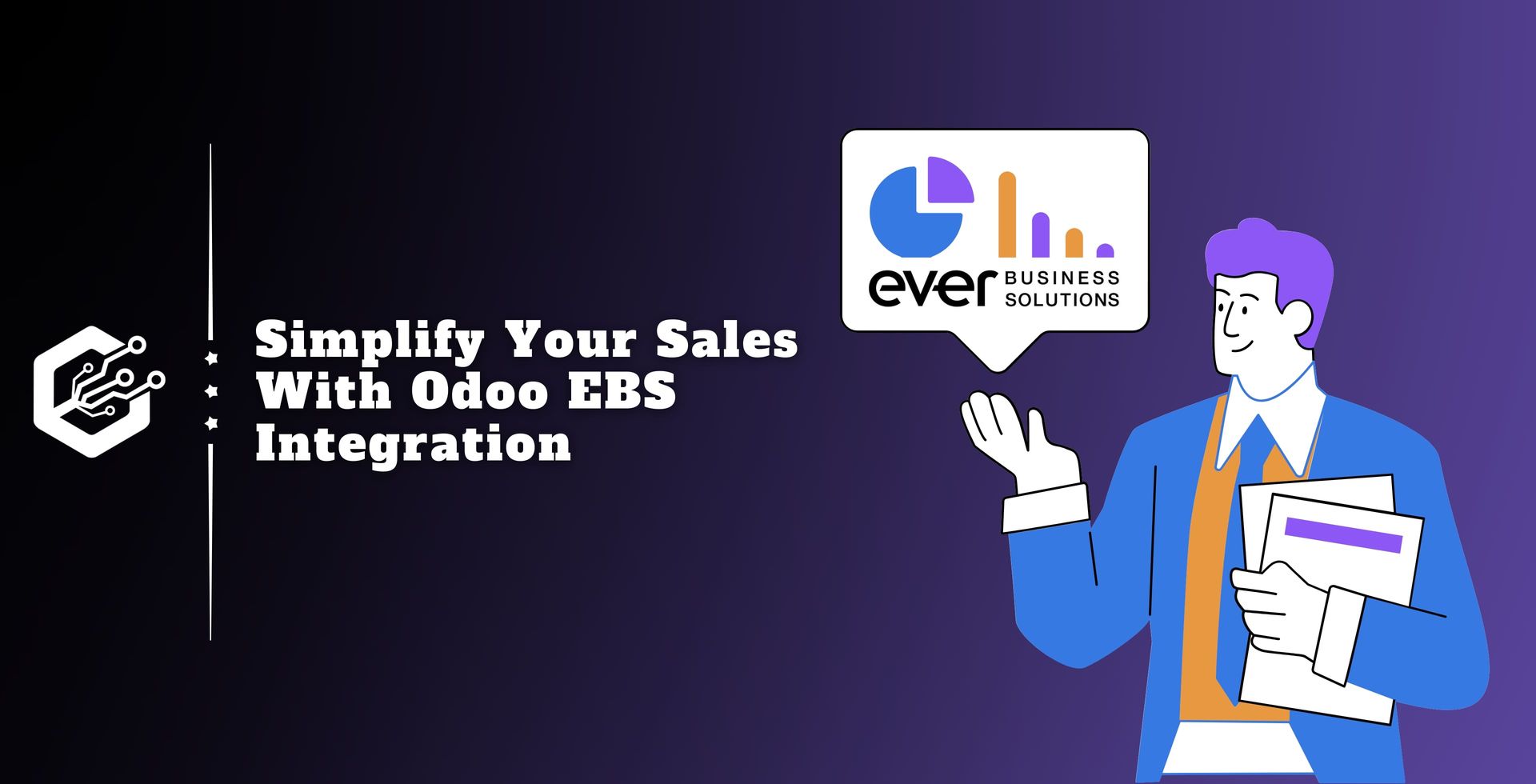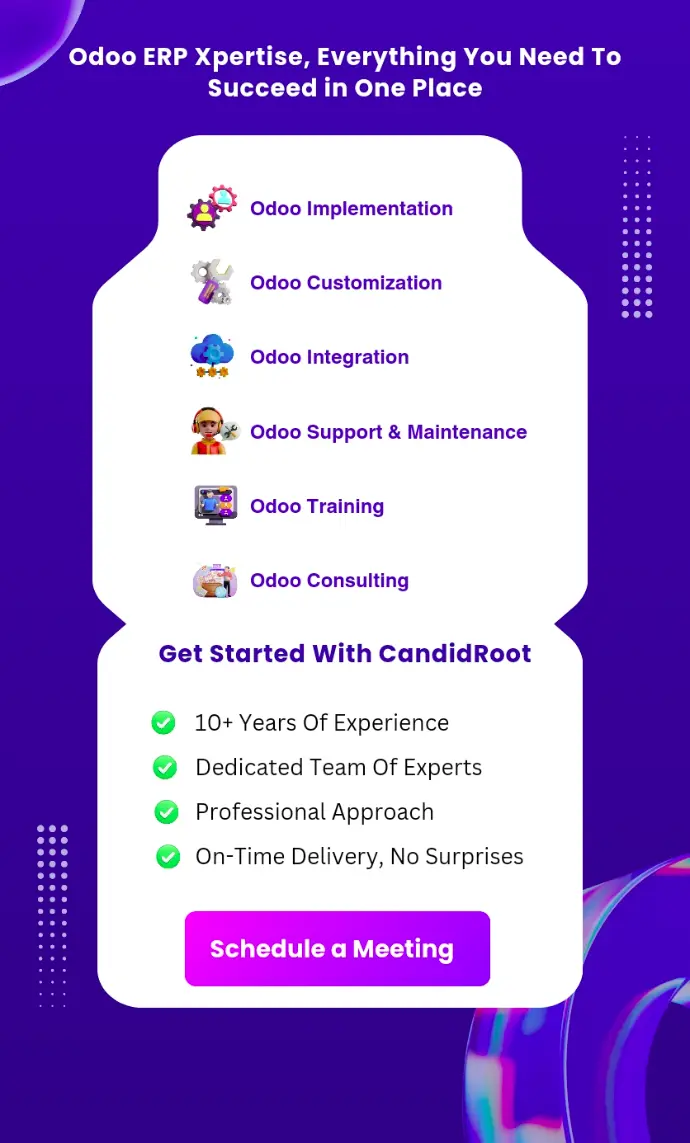Odoo is a business application that can be seamlessly integrated with other systems through its great adaptability and flexibility features.
One such integration, with Electronic Banking Services (EBS), allows for safe and effective payment processing, improving Odoo’s POS (Point of Sale) and Invoice functionalities.
Introduction to Odoo and EBS
Odoo: Odoo is an ERP software that is available as open-source and includes several business applications, including project management, accounting, sales, inventory, CRM, and POS.
EBS (Electronic Banking Services): EBS is a payment gateway service that enables online purchases to be made using a variety of payment methods, such as mobile wallets, debit cards, credit cards, and net banking.
The payment process is streamlined by integrating Odoo with EBS increasing operation effectiveness and elevating customer satisfaction.
Importance of Integrating Odoo with EBS
Key Benefits:
- Real-time Payment Processing: It ensures fast and effective payment processing.
- Security: Strong security mechanisms are offered by EBS to safeguard private payment information.
- Streamlined Operations: Streamlines financial procedures by lowering manual mistake rates.
- Enhanced Customer Experience: Provides a simple easy way to make payments.
Odoo POS and EBS Integration
An easy-to-use tool for managing sales transactions in restaurants, retail establishments, and other enterprises is Odoo POS.
Integration Steps:
Setup EBS in Odoo:
- Install the Odoo App Store’s EBS payment gateway module.
- Configure EBS account details in Odoo (API key, Merchant ID, Secret Key)
Configure Payment Methods:
- To accept Payments, enable EBS in the Odoo POS settings.
- It provides you with change options such as accepted currencies, transaction fees, and payment confirmation messages.
Processing a Sale:
- Choose EBS as your payment option at the POS terminal.
- To Process the transaction, the POS system talks to EBS.
- A receipt is generated and the transaction details are updated in Odoo upon successful payment.
Transaction Reconciliation:
- The relevant selling order and payment details are instantly matched in Odoo.
- Create analytics and reports to track trends in sales and payments.
Odoo Invoicing and EBS Integration
Effective management of client invoices, payments, and follow-ups is made possible by Odoo invoicing.
Integration Steps:
Setup EBS for Invoicing:
- Configure the Odoo invoicing module’s EBS payment gateway.
- Configure templates for invoices and automated payment reminders.
Generate and Send Invoices:
- In Odoo, create an invoice and include a payment link that takes the user to the EBS payment gateway.
- Use the customer portal or email to send the invoice to the customer.
Customer Payment:
- The EBS payment page is displayed to the customer after they click the payment link.
- The payment is completed, and Odoo updates the transaction status.
Payment Confirmation and Reconciliation:
- After obtaining payment confirmation from EBS, Odoo adjusts the invoice status to ‘Paid’.
- Financial reports are updated after payment entities are reconciled.
Handling BRN, TRN, Taxes, and Discounts
For legal and tax compliance, the Business Registration Number (BRN) and Tax Registration Number (TRN) are important.
Configuration and Usage:
BRN and TRN:
- Set up TRN in the accounting settings and BRN in the company settings of Odoo.
- Invoices and sales receipts must have the BRN and TRN on them for compliance and correct tax filing.
Taxes:
- Set up tax rates and categories in Odoo (such as sales tax and VAT).
- Taxes are automatically calculated and included in sales receipts and invoices.
- EBS ensures accurate financial documentation by processing the entire amount, including taxes.
Discounts:
- Set discount policies (set amounts or percentage-based) either manually during sales or at the product level.
- Apply discounts to sales and invoices, then use EBS to process the total amount.
- Adjust payments in Odoo to reflect discounts.
Technical Considerations
API Integration:
- Make sure that the BRN, TRN, tax, and discount fields are included in the API calls between Odoo and EBS.
- Update credentials and API keys often to ensure a secure connection.
Security:
- For easy encrypted communication, use SSL/TLS.
- Adhere to best practices for data security, such as providing tokens and safe payment information storage.
Testing and Validation:
- Before deploying the integration in production, thoroughly test it in a sandbox setting.
- Verify all possible transaction circumstances, such as refunds, unsuccessful transactions, and successful payments.
Conclusion
The smooth and secure payment processing that is provided by integrating Odoo with EBS for POS and invoicing improves business operations. By providing a variety of payment choices, this integration not only increases client satisfaction but also optimizes the sales and payment processes.
Businesses may achieve greater financial control and operational excellence by using the extensive capabilities of Odoo and the secure payment processing of EBS.
Working with expert Odoo Developers and payment gateway experts is advised for a successful installation to guarantee seamless and effective integration.


